Do you have a question about the Chevrolet 2006 Epica and is the answer not in the manual?
Information on adjusting and operating front seats, including manual and power seat functions.
Details on rear seat operation, including how to fold down the seatbacks.
Guidance on how to wear safety belts properly, including specific advice for pregnant women.
Information on selecting and using child restraints, including older children and infants.
Explanation of the vehicle's airbag system, including types, deployment, and safety precautions.
Procedures for checking the proper functioning of safety belts and airbag systems.
Information about vehicle keys, including their use for ignition and locks, and the electronic immobilizer.
Operation and features of the remote keyless entry system, including matching transmitters and battery replacement.
How to lock and unlock vehicle doors using keys, central locking, and power door locks.
Information on power windows, express-down feature, and the window lockout button.
Explanation of the vehicle's theft-deterrent system and how to arm, disarm, and detect tamper conditions.
Guidelines for new vehicle break-in, ignition positions, and starting the engine.
Details on automatic transaxle shift lever positions, operation, and adaptive shift logic.
Information on manual and automatic dimming rearview mirrors, and outside power mirrors.
Description of various storage compartments including glove box, cupholders, and console areas.
Operation of the vehicle's sunroof feature, including vent and express-open positions.
Identification and location of instrument panel components, controls, and indicators.
How to operate the vehicle's heating, cooling, and ventilation system, including manual and automatic modes.
Explanation of various warning lights, gauges, and indicators on the instrument panel and their meanings.
Information on operating the vehicle's radio, CD player, and audio system features.
General advice on defensive driving, road conditions, and maintaining vehicle control.
Dangers, effects of alcohol on driving, and legal implications of drinking and driving.
How brakes, steering, and accelerator systems work together for effective vehicle control.
Explanation of braking action, perception time, reaction time, and stopping distances.
Information on the advanced electronic braking system that helps prevent skidding.
How the TCS limits wheel spin, especially in slippery conditions, and its operation.
Information on power steering, speed-sensitive power steering systems, and steering tips.
Understanding factors contributing to loss of vehicle control, including skidding.
Tips and considerations for driving safely during nighttime conditions, including glare and visibility.
How rain and wet roads affect traction, braking, visibility, and the risk of hydroplaning.
Understanding the causes and dangers of hydroplaning and how to avoid it.
Dangers and precautions when driving through flowing or rushing water.
Strategies for improving safety in heavy city traffic and managing intersections.
Rules and tips for safe and efficient driving on highways and expressways.
Pre-trip checks and preparations for ensuring vehicle readiness and personal comfort.
Tips for driving safely on steep or mountainous terrain, including braking and gear selection.
Preparing the vehicle and driving safely in winter conditions, including emergency supplies.
Methods for freeing a stuck vehicle, including rocking and using caution to avoid damage.
How to properly load the vehicle to maintain handling, stability, and safety, and determine load limits.
Information on towing services, recreational vehicle towing, and specific towing methods.
Information regarding vehicle servicing, recommendations for using GM parts, and modifications.
Details on recommended fuel types, octane ratings, gasoline specifications, and additives.
How to check and maintain essential under-hood components like fluids and the engine air cleaner.
Procedures for replacing various exterior and interior vehicle bulbs, including halogen bulbs.
Instructions on how to inspect and replace windshield wiper blades.
Information on tire maintenance, selection, inflation pressure, and safety precautions.
Guidance on cleaning and maintaining the vehicle's interior surfaces, fabric, leather, and exterior finish.
Information on the Vehicle Identification Number (VIN), engine identification, and service parts labels.
Details on fuses, circuit breakers, add-on electrical equipment, and power options.
Technical specifications and fluid capacities for the vehicle, including engine and transaxle details.
List of common replacement parts with GM and ACDelco part numbers for routine maintenance.
Importance of proper engine oil maintenance and adherence to recommended schedules.
Necessary maintenance procedures and their impact on vehicle warranty coverage.
Explanation of the structure and content of the maintenance schedule section.
Details on scheduled maintenance tasks to be performed at specified mileage intervals.
Guidance on choosing between short trip/city and long trip/highway maintenance schedules.
Maintenance schedule for vehicles used for short trips, city driving, or under severe conditions.
Maintenance schedule for vehicles used for long trips and highway driving.
Owner-performed checks and services to ensure vehicle safety and dependability.
Important inspections recommended to be performed by a dealer service department.
List of recommended fluids and lubricants for proper vehicle maintenance.
Space to record maintenance performed and retain receipts for warranty purposes.
Steps to follow if concerns about vehicle purchase or operation are not resolved by the dealer.
GM ownership resource for vehicle information, service reminders, and dealer location.
Information on services provided by Chevrolet Roadside Assistance for owners.
Program offering transportation options during warranty repairs to minimize customer inconvenience.
Information on vehicle computer systems and data recording in crash events for safety improvement.
Guidance on proper repair procedures and using genuine GM parts after a collision.
How to report safety defects to government agencies and General Motors.
Information on how to order service manuals, bulletins, and other technical documentation.
| Brand | Chevrolet |
|---|---|
| Model | 2006 Epica |
| Category | Automobile |
| Language | English |
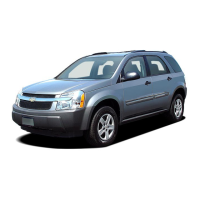

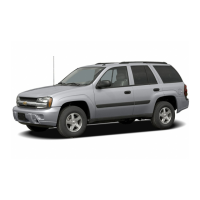


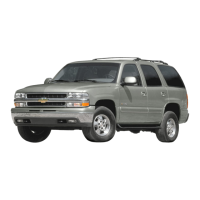


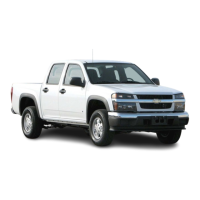


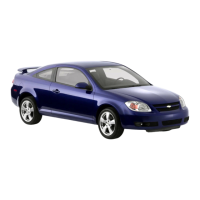
